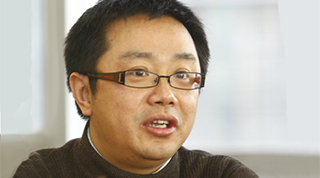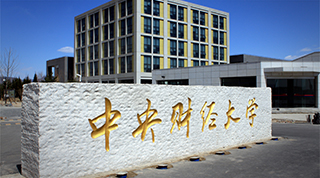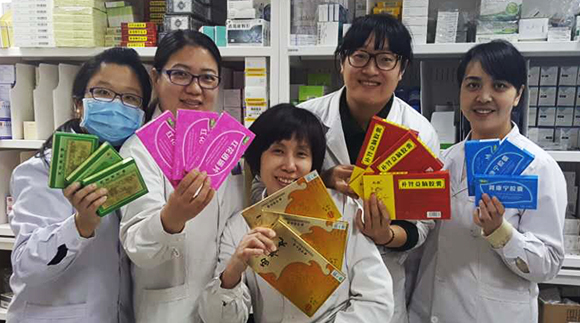Cutting hospitals’ dependence on drug sales aims to stem skyrocketing pharmaceutical expenditure, but leaves hospitals in a mess.
drug-addicted hospitals
When the government gutted public hospital funding in the 1980s and ‘90s, institutions moved to pharmaceutical drug markups to fill revenue gaps. A 2006 move to cap markups at 15 percent at major hospitals only made things worse, with doctors prescribing extra and more expensive medicines to cover shortfalls and plump up bonuses. With misaligned incentives, these drug-addicted hospitals are blamed for pushing up healthcare costs, harming public health, and driving local health insurance funds to the brink.
At the 2017 Two Sessions, the government announced it will completely abolish markups by the end of the year, limiting public hospital funding sources to medical services and state subsidies. Drug sales accounted for 39 percent of county-level public hospital income in 2015, according to the government. Pharmaceutical expenditure per capita more than tripled from 2006 to 2016, according to World Bank, now accounting for 40 percent of total healthcare costs. The aim is to reduce this to 30 percent by end 2017. Pharmaceutical prices fell by 25 percent on average in piloting provinces.
wishful thinking
Cutting such a large income stream for hospitals and doctors means shortfalls must be made up elsewhere. Rather than boosting subsidies, government is pinning its hopes on allowing hospitals to raise service prices for diagnosis, treatment, surgery, recovery care and nursery services. Labour market and remuneration restructure reforms are also being piloted: introducing performance-based systems that decouple doctors’ salaries from revenue generated, and incentivise higher-quality services; adjusting or abolishing the public payroll system; and giving doctors more flexibility in opening private clinics.
Other reforms, like disease-based fee systems and independent pharmacies, also target the hospital–drug connection. Hopes are that well-designed medical service price adjustments, making it more expensive to visit big hospitals, will motivate patients to use primary care, promoting multi-level care development.
and then there were two
The abolition builds on moves to clean up the pharmaceutical supply chain, which is bloated, inefficient and opaque. Products typically go through four or five intermediaries, each adding their own markup, before reaching hospitals. This leads to an average of 30 percent inflation on ex-factory prices for patients, and complicates oversight. Kickbacks are rife.
On 9 Jan 2017, the government announced all public hospitals should implement a ‘two-invoice’ system by 2018, limiting transactions in the supply chain to a maximum of two steps—manufacturer to distributor and distributor to retailer. Reducing the stages between production and retail, and imposing higher verification requirements across the chain, the move aims to cut prices, increase transparency (clamping down on invoice fraud and kickbacks), and consolidate the industry, driving small middlemen out of the business. Manufacturers must directly participate in procurement bidding (a task previously usually undertaken by distributors).
There are currently around 13,500 wholesale distribution enterprises, with the top three occupying around 33 percent of the market, compared to 80 percent in developed countries. The ‘13th 5-year plan for pharmaceutical distribution industry development (2016-20)’ proposes cutting this number by 10,000, and having 100 large distributors account for 90 percent of annual total sales by 2020.
outlook
Making up funding losses will be hard, especially for lower-level hospitals in poor regions that rely even more on drug sales. Many below-county-level hospitals piloting abolishing markups were unable to generate enough profit through services and subsidies alone, forcing them into debt. Governments in wealthier areas have more ability to cover new shortfalls that may result.
There is also still money in drugs for hospitals. Winning prices in procurement bidding can be several or even dozens of times higher than wholesale prices, meaning doctors pocket the difference. Doctors can receive kickbacks equivalent to 30 to 40 percent of pharmaceutical prices for medicines not covered by insurance. ‘Sunshine’ procurement systems are crucial here, such as the one rolling out in Beijing, which publicises winning prices and quality indicators to all manufacturers to introduce competition and transparency, with greater oversight and penalties for bribery.
Overcoming public perception will be difficult. Patients may see significantly increased service charges, yet be prescribed fewer drugs, going against assumptions equating more pills with better care. Incentives are still misaligned with the public good. Whether selling pharma or services, hospital directors are encouraged to generate cash flow, not to seek the best therapeutic outcomes at the lowest cost, say insiders.
Eliminating distributors risks creating monopolies. The one-size-fits-all approach here gives little concession to different regions, business models, production scales and product types. The two-step limit will make it difficult for pharmaceuticals to be distributed to remote, sparsely populated and poorer areas.
Cutting the amount of pharmaceuticals consumed will impact manufacturers, with the government looking also to consolidate production and eliminate numerous small and low-end producers, who will also struggle to pass higher quality requirements. Ex-factory prices will likely increase, to reflect manufacturers’ new cost burdens in having to undertake marketing and sales work (or outsource to separate contract sales organisations) in procurement tenders previously undertaken by distributors. Higher ex-factory prices means heavier tax burdens for manufacturers. Manufacturers and distributors may still bribe hospitals to purchase their goods, and tempt doctors to prescribe their products with kickbacks, though greater (and easier, given the reduction of numbers) oversight is hoped to counter this.
roundtable

Gu Xin 顾昕 | Peking University School of Government
Strict controls on service fees are the root cause of inflated pharma prices, not supply chain issues. Inappropriately low medical service fees lag behind inflation, forcing hospitals to find money elsewhere. Hospitals will also lack incentive to buy low-price pharmaceuticals unless medical insurance payments are reformed. The insurer should pay the bulk and hospitals can retain the surplus. This would encourage hospitals to lower their costs and purchase medicines with prices as low as possible. Abolishing markups would only push hospitals’ legitimate revenue from drug sales under the table, as new kinds of kickbacks. Caijing

Lu Qian 路乾 | Central University of Finance and Economics
Reducing transactions in the supply chain won’t bring down drug prices. Manufacturers now often outsource the marketing and sale of products as it is cheaper. The two-invoice system, however, forces firms to take on this job themselves, regardless of whether it makes economic sense. The Fujian pilot showed prices were much higher when drugs were sold to hospitals directly, compared to when they were sold to intermediaries. The well-intentioned system backfired. Financial Times Chinese

Wang Yefu 王野夫 | Nanmian Medical Group founder
Given doctors’ heavy reliance on prescription for their income, cancelling pharmaceutical price markups will only drive them to seek alternative source of grey income, such as ordering expensive medical examinations. By reducing hospitals’ incentives to purchase drugs, the move will also deprive the supply chain of its profit, forcing pharmaceutical manufacturers to adjust their business strategies. They may resort to producing more expensive drugs to keep profit from falling. Overall, pharmaceutical prices will increase as a result. Zhihu zhuanlan
context
22 Mar 2017: Beijing announces it will become the first province to shift public medical institution funding away from pharmaceutical revenues, abolishing pharmaceutical markups, rolling out the two-invoice system, and bringing in a ‘sunshine’ mechanism for drug procurement, effective 8 april
5 Mar 2017: Li Keqiang 李克强 premier calls all public hospitals to completely abolish pharmaceutical markups by end 2017 in his ‘2017 government work report’
9 Feb 2017: State Council issues 'Opinions on further improving pharmaceutical production, distribution and usage policies’ stressing abolishing pharmaceutical markups to deal with drug-addicted hospitals and promoting two-invoice system nationwide
9 Jan 2017: National Health and Family Planning Commission (NHFPC) issues 'Implementation measures on promoting the "two-invoice" system in pharmaceutical procurement', calling for national rollout by 2018. Pilots are to cover 11 provinces and 200 cities by end 2017
1 Jan 2017: Anhui, Shanxi and Guangdong start implementing the two-invoice system; more provinces expected to join in 2017, but some voice difficulties
end 2016: all 200 cities piloting public hospital reforms reported to have abolished pharmaceutical markups
6 Apr 2016: Premier Li calls for all 200 cities piloting public hospital reforms to abolish markups at the State Council executive meeting
end 2015: all public hospitals at county level reported to have abolished pharmaceutical markups as required by State Council ‘Opinions on implementing nationwide county level public hospital reforms’ issued 8 May 2015
26 Apr 2016: State Council ‘Key tasks for 2016 medical reform’ officially defines the two-invoice system, requiring 11 provinces piloting comprehensive medical reform to launch it by year’s end
5 Jan 2012: Chen Zhu 陈竺, health minister at the time, vows to abolish markups at county level hospitals by 2013, expanding to all public hospitals by 2015
end 2011: all public grassroot medical care facilities reported to have abolished pharmaceutical markups
7 Jan 2008: Chen proposes abolishing pharmaceutical markups for the first time, at the national public health work conference
19 May 2006: NDRC issues ‘Notice on further consolidating pharmaceutical and medical service markets’ price orders’ to cap pharmaceutical markups at 15 percent
2006: plans for a two-invoice system in Guangdong shelved due to massive resistance from manufacturers and distributors
